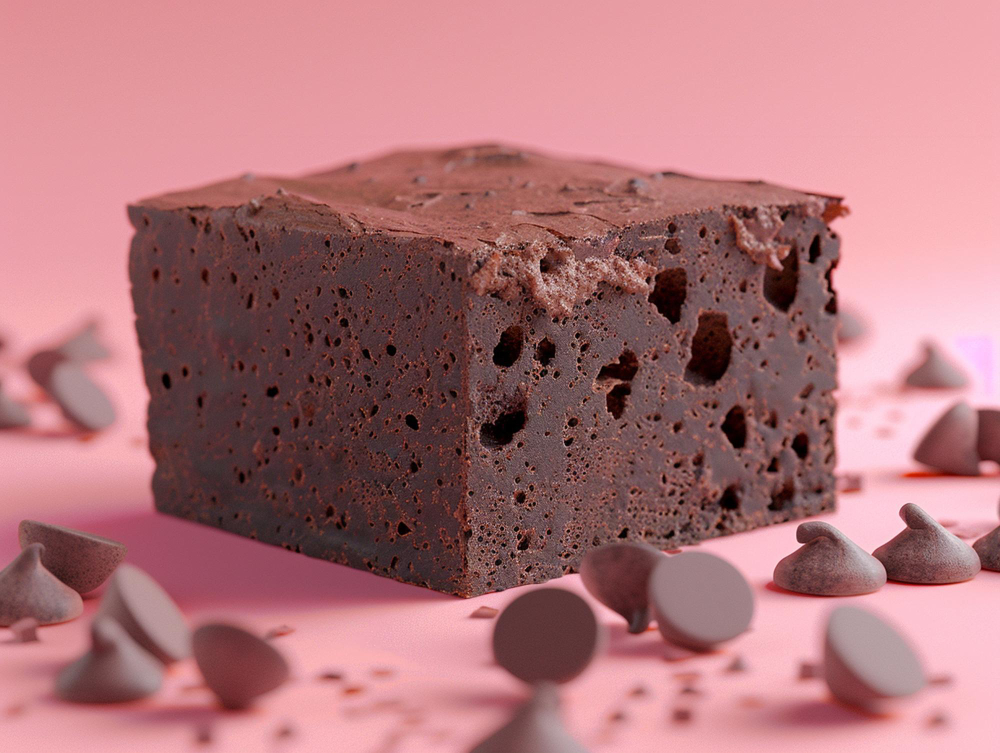Ah, fudge! Sweet, creamy, and sometimes—as you might have discovered—unexpectedly grainy. Your fudge has a grainy texture because of sugar crystallization during the cooking or cooling process. It’s like your lovable but clumsy friend at the party who accidentally steps on everyone’s toes.
Imagine this: you’re whipping up a batch of fudge, and it’s all fun and games until those sugar crystals form, turning your smooth confection into something with the charm of beach sand. It’s either too much stirring or not enough, diving into this sweet science can be tricky. The struggle is real when you’re aiming for that perfect melt-in-your-mouth delight but end up with something that crunches instead.
Don’t let your into-a-bowl dreams melt away just yet! Understanding the art of making fudge means conquering the tiny sugar crystals that can ruin texture. With a bit of attention to detail (and maybe a candy thermometer), you can turn rocky road into a smooth journey. Get ready to reclaim your title as the fudge-making champ with a few tricks up your sleeve.
The Sweet Science of Fudge Textures
Creating fudge is like a comedy routine — timing is everything. Understanding sugar crystals, dairy content, and cooking temperatures can turn your grainy disaster into a creamy masterpiece. Let’s learn how to make your fudge smoother than your uncle’s karaoke performance at family gatherings.
Sugar Crystals: Friend or Foe?
Sugar crystals are like the world’s most fickle friends. They can either make your fudge silky or leave it grainy as sandpaper. The secret? Avoid over-stirring once your mixture starts boiling. Over-stirring is like inviting a sugar rebellion, leading to grainy chaos.
To minimize risks, use a lid to trap steam and dissolve sugar bits. Watching out for rogue crystals is vital. Checking the sugar’s mood with a candy thermometer helps, aiming for the right temperature. Just remember, happy sugar makes happy fudge!
Creamy Dreams: The Role of Dairy
Dairy is the peacekeeper in the fudge world. It plays a crucial role in achieving that melt-in-your-mouth texture, much like how delicious cheese is to a pizza. Opt for full-fat dairy, such as cream or butter, to ensure a rich taste.
Keeping things smooth involves heating slowly so nobody goes into a buttery meltdown. Gently integrating your dairy into your mix is like whispering sweet nothings to your fudge. Your patience here pays delicious dividends, helping to prevent overcooked fudge drama.
Thermometer Thaumaturgy: Cooking Temperature Tricks
Despite sounding magical, thermometer thaumaturgy is less about spells and more about science wizardry. Achieving just the right temperature is crucial for avoiding grainy surprises. Get friendly with a candy thermometer.
Cook your fudge until it hits that magical soft-ball stage, about 234-239°F (112-115°C) as per trusted recipes. Overcook, and your sweet symphony ends in a shrill, hard-brittle note. Too low, and you might end up with fudge soup. Balance is key, and this is where your thermometer becomes your best friend on this sweet adventure.
Fudging Up and Fixing It
Grainy fudge can be a real letdown, but don’t worry! You can prevent these issues by keeping an eye on temperatures and ingredients. If grainy fudge happens, there are ways to bring it back to its smooth, creamy state.
Don’t Cry Over Spilled Milk: Preventing Graininess
To stop your fudge from turning into sugary sandpaper, remember this: temperature is key! Ensuring your mixture reaches between 237 and 239 degrees Fahrenheit means you’re on the right track.
Patience is a virtue. Let the fudge cool down slowly and undisturbed. Agitating it early forms those pesky seed crystals that lead to graininess.
Adding a dab of butter or a splash of cream of tartar can keep sugar in check. These ingredients help prevent crystallization, giving you a smooth consistency.
Use good tools like a heavy-duty pot and a trusty wooden spoon. They ensure even heating and mixing. Lastly, make sure your homemade fudge is given the love it deserves. Quality sweetened condensed milk or vanilla extract can make a difference.
How To Fix What’s Been Fudged
Oops, too late, it’s all grainy! Here’s the fix for your fudge. Start by returning it to the pot with a bit of water to dissolve the sugar crystals. Heat it gently over low heat until smooth, then bring it back to the correct fudge temperature.
Adding more fat can help, just a dollop of butter might do the trick. This helps the sugar mix in well, giving a smoother texture.
After it’s melted nicely, let it cool without disturbing it. Finish with a touch of vanilla extract for flavor, and you’ll save your fudge from the fudge hall of shame. So, bring out your inner fudge wizard and make that grainy disaster as smooth as butter!
